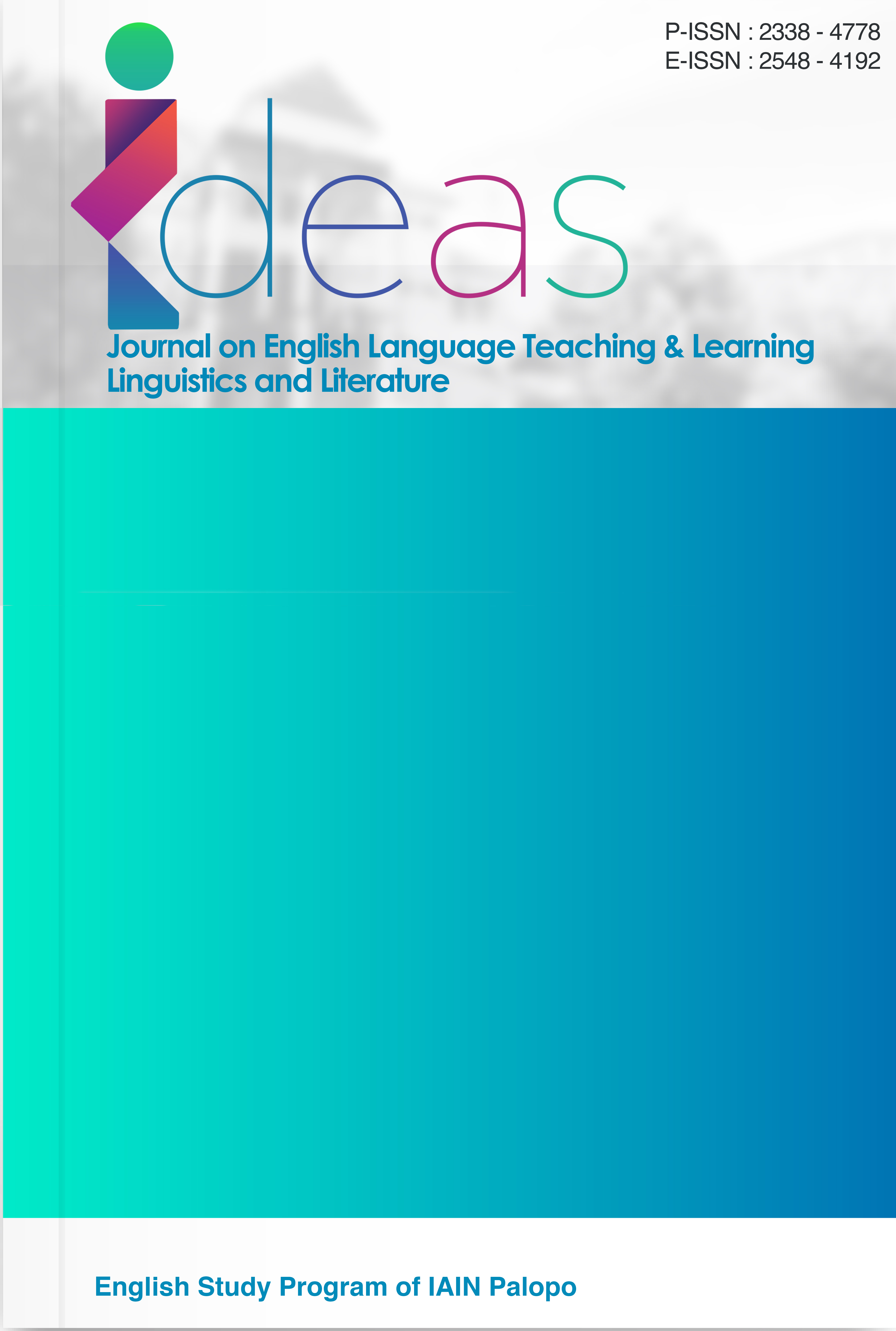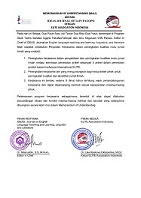The Influence of the Inquiry Method on Critical Thinking Skills in Learning to Write Explanatory Texts for Grade XI Students at Senior High School
DOI:
https://doi.org/10.24256/ideas.v13i2.5684Keywords:
Inquiry method, explanatory text writing skills, education.Abstract
This study aims to describe students' ability to write explanatory texts before using the inquiry method, describe students' ability to write explanatory texts after using the inquiry method, and test the effect of applying the inquiry method on the ability to write explanatory texts of eleventh-grade students at SMAN 19 Gowa. This research uses a quantitative research method. Data collection techniques were carried out using essay tests, and the data were analyzed using descriptive and inferential statistics (SPSS 29.0.10). The results of this study show an improvement in students' critical and creative thinking skills in writing explanatory texts after using the inquiry-based learning method. The analysis of the pretest and posttest results shows that before the inquiry method was applied, the majority of students were in the fair and very good categories, with some students in the poor and good categories. After implementation, the majority of students moved to the good and very good categories, showing a significant improvement in their abilities. This improvement is evident in the distribution of student scores, where the average score increased from 58.23 in the pretest to 77.30 in the posttest. Statistical tests using the Paired Sample T-Test showed a t-value of 7.018 with a significance level (p-value < 0.001). Since the p-value is less than 0.05, the null hypothesis (H0) is rejected, and the alternative hypothesis (Ha) is accepted. This indicates a significant difference between the pretest and posttest scores, supporting the hypothesis that the inquiry method has a meaningful impact on students' critical and creative thinking abilities. Thus, this research proves that the application of the inquiry method is effective in improving students' abilities in writing explanatory texts, both in terms of quality and variation in critical and creative thinking skills.
References
Adelia, P., Junsap, R. M., Mustika, N. I., & Santoso, G. (2022). The influence of the incuiry method on students' critical thinking skills in elementary schools. Journal of Transformative Education (Jupetra), 01(03), 156–163.
Amalia, N. F., & Pujiastuti, E. (2016). Critical thinking skills and curiosity through the PBL model. Proceedings of the 10th National Matematics Seminar, Universitas Negeri Semarang 2016, 523–531.
Aminullah. (2017). A study on the use of project-based learning to improve students' mathematical creative thinking skills. Journal of Education Studies, 45.
Arini, S. K., & Winda, T. (2019). Integration of 21st-century skills in sociolinguistics modules: 4C skills (Collaboration, Communication, Critical Thinking, Dan Creativity). Juounal of Muara Education, 4(2), 455–466. https://doi.org/10.52060/mp.v4i2.179
Ennis, R. H. (2015). Critical Thinking: A Streamlined Conception. 31–32.
Facione, P. a. (2011). Critical Thinking : What It Is and Why It Counts. Insight Assessment, ISBN 13: 978-1-891557-07-1., 1–28. https://www.insightassessment.com/CT-Resources/Teaching-For-and-About-Critical-Thinking/Critical-Thinking-What-It-Is-and-Why-It-Counts/Critical-Thinking-What-It-Is-and-Why-It-Counts-PDF
Hadi, A. F., & Salsabila, N. (2023). Organizational strategies in secondary education in facing global challenges. Education Strategies Journal, 2(1).
Jayadi, A., Putri, D. H., & Johan, H. (2020). Identifikation of 21st-century skills development in problem-solving among high school physics students in Bengkulu. Journal of physics Coils, 3(1), 25–32. https://doi.org/10.33369/jkf.3.1.25-32
Kosasih, E., & Wibowo, H. (2020). Main materials of Bahasa Indonesia: Text-Based & discussion and HOTS practice exercises for SMP/MTs Kelas VII, VIII, IX (Vol. 1). UPI Press.
Muhammad, H. H. (2021). critical thinking skills in education. Journal of Educational Review, 7(1), 391–402. https://doi.org/10.5281/zenodo.5746181
Muhammad Rusdi, & Marwah. (2022). The role of teachers in character education at MTS Ibadurrahman Muttahida, Sibulue. HELPER : Journal of Counseling and Guidance, 39(2), 91–100. https://doi.org/10.36456/helper.vol39.no2.a5537
Sipahutar, A., Rantung, D. A., & Naibaho, L. (2023). Inquiry Learning according to John Dewey and its application in education. Journal of Inquiry-Based Learning, 8(September), 108–123.
Suid, A. B., & Yusuf, M. N. (2017). The Influence of inquiry learning on the subtheme of motion and force on the learning outcomes of fourth-grade students at Class IV SDN 16 Banda Aceh. Pesona Dasar: Juornal of Elementary Education Humanities, 3(2).
Wewe, M. (2017). Efforts to improve students' critical thinking skills in mathematics through problem posing in class VIII students of class VIII SMP Negeri 4 Golewa for the academic year 2016 / 2017. Journal of Mathe Educator Nusantara (JMEN), 03(1), 1–57.
Yani, G. A. (2020).Aplication of the collaborative learning model in explanatory text writing and its impact on improving critical thinking in eighth-grade students of SMPN 5 Cianjur in the 2017-2018 academic year. Journal of Education,III(1), 70–71.
Downloads
Published
Issue
Section
Citation Check
License
Copyright (c) 2025 Nur Aisyah, Andi Sahtiani Jahrir, Sultan

This work is licensed under a Creative Commons Attribution-ShareAlike 4.0 International License.
Authors retain copyright and grant the journal right of first publication with the work simultaneously licensed under an Attribution-ShareAlike 4.0 International (CC BY-SA 4.0) that allows others to share the work with an acknowledgement of the work's authorship and initial publication in this journal.
Authors are able to enter into separate, additional contractual arrangements for the non-exclusive distribution of the journal's published version of the work (e.g., post it to an institutional repository or publish it in a book), with an acknowledgement of its initial publication in this journal.
Authors are permitted and encouraged to post their work online (e.g., in institutional repositories or on their website) prior to and during the submission process, as it can lead to productive exchanges, as well as earlier and greater citation of published work (See the Effect of Open Access)




